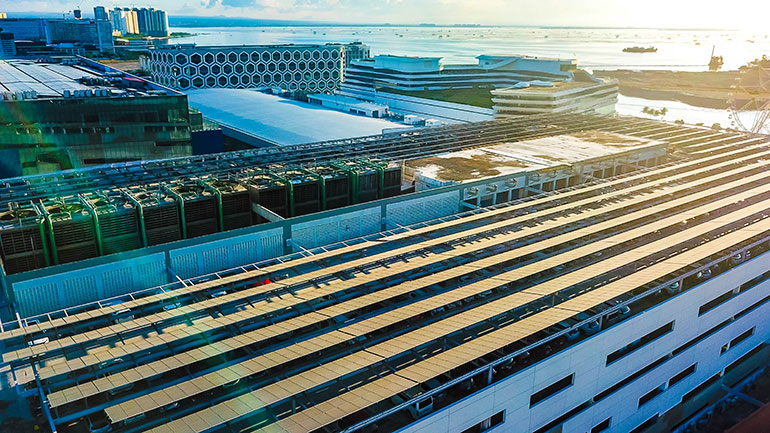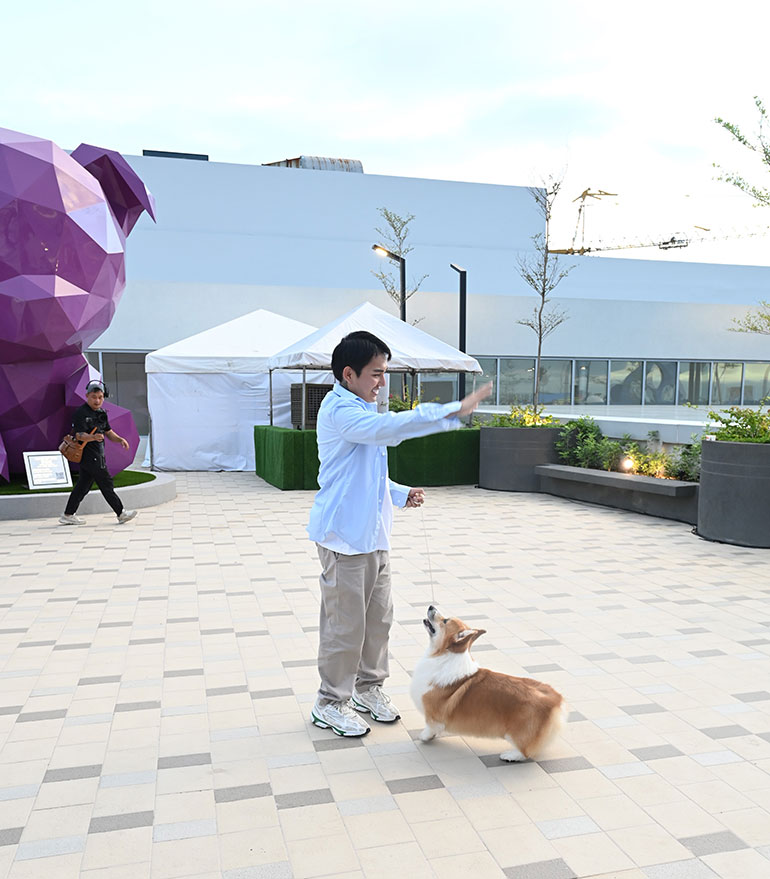BANGKOK/MANILA – Four Chinese nationals accused by the Philippines of espionage led Chinese Communist Party-affiliated groups that made donations of cash to a Philippine city and vehicles to two police forces, according to photos, videos and online posts seen by Reuters.
Wang Yongyi, Wu Junren, Cai Shaohuang, and Chen Haitao were among five Chinese men detained by Philippine investigators in late January for allegedly gathering images and maps of Philippine naval forces near the South China Sea.
The five men had flown drones to spy on the Philippines’ navy, said the National Bureau of Investigation (NBI), adding that it had found photos and maps of sensitive sites and vessels on their phones. A senior NBI official told Reuters that the men had been charged with espionage, which carries a prison term of up to twenty years.
Reuters could not identify a lawyer for the men or establish how they intend to plead. They have not spoken publicly about their arrests and questions directed to them via the Chinese embassy in Manila went unanswered.
The four men were leaders of civic groups overseen by the Chinese Communist Party’s (CCP) foreign influence network, according to Reuters’ review of articles and multimedia posted by the two groups and in Philippine media.
Wang, Wu and Cai made the donations to the city of Tarlac and to the police forces via the Chinese-backed groups in 2022 and continued to host officials at events through 2024. Reuters could not establish the reason for the donations.
Tarlac is home to major military bases, including one used by the Philippines and the United States for live-fire exercises during annual military drills. Photos of bases in the area were not among the sites that NBI said were found on the men’s devices.
All five detained men also met China’s military attaché in Manila, Senior Col. Li Jianzhong, at least once in the weeks before their arrest, Reuters found. Images and videos additionally show Wang, Wu, and Cai meeting the attaché at least three times in 2024, including in May, when he opened the civic groups’ office in Manila.
Details of the donations made by the men, their interaction with Li, and their association with the CCP have not previously been reported.
The ties revealed by Reuters go beyond public statements made by Philippines investigators, who have said the men disguised themselves as “harmless” members of a legitimate organization.
The NBI said the men were apprehended after “hot-pursuit” operations. It did not specify who the men were suspected of working for. But Beijing has denied the accusations of espionage, which state media has branded the “smear tactics” of a nation whose Chinese policy “is slipping into an impulsive and irrational abyss.”
China’s Ministry of Foreign Affairs and its Manila embassy did not respond to requests for comment.
The office of the mayor of Manila, whose police force took motorbikes from the men, said in response to Reuters’ questions that the “deed of donation and motorcycles… were found to be in order.”
The mayor of Tarlac city and the two police forces did not respond to requests for comment.
The Philippines does not have a specific foreign interference law, but is currently drafting one amid rising tensions with China. Government agencies are permitted to receive donations but contributions from foreign authorities must be approved by the president, according to guidelines.
The practice of donations has been criticized by academics and the Transparency International non-profit, which has noted that Philippine leaders have sometimes used such donations to solicit bribes. Reuters uncovered no evidence of bribe payments in this case.
An academic paper co-written by retired Philippine Rear Adm. Rommel Jude Ong and posted this month on the Social Science Research Network platform said that Chinese businesses and diaspora networks served as “critical intermediaries” in promoting Beijing’s agenda and Philippine local governments were vulnerable to influence via “economic incentives and donations.”
China has said countries including Australia that have tried to fend off foreign interference by passing new laws are damaging bilateral relations.
CHINA’S “MAGIC WEAPON”
The CCP’s United Front Work Department oversees influence operations carried out by the Chinese diaspora and was once described by Chinese leader Xi Jinping as a “magic weapon.” The U.S. State Department says it has penetrated governments worldwide “through propaganda and manipulation of susceptible audiences and individuals.”
The Philippines has arrested at least eight alleged Chinese spies in recent weeks. Their detentions have fueled tensions between the two countries, which share a maritime border and have conflicting claims over territory in the South China Sea.
Manila, a treaty ally of the U.S., has become a site of geopolitical struggle between the two superpowers, especially since President Ferdinand Marcos Jr. brought the country back into Washington’s orbit after a pivot to Beijing under his predecessor.
The recent arrests demonstrate the Philippines’ “need to reconfigure its national security outlook beyond traditional or conventional security threats,” said Don McLain Gill, an international relations expert at Manila’s De La Salle University.
A spokesperson for the Philippine government did not address questions sent via a messaging app.
‘TELL CHINESE STORIES WELL’
Wang, Wu, Cai and Chen lead the Philippine China Association of Promotion of Peace and Friendship, a civic group founded in 2016. The association’s leaders in 2022 formed a second entity, the Qiaoxing Volunteer Group.
The groups share a website that advertises their CCP affiliation. Both are overseen by the All-China Federation of Returned Overseas Chinese (ACFROC), a CCP-led body engaged in united front work, as Beijing terms influence operations.
The website appeared to no longer be accessible as of Feb. 28.
United Front Work Department officials have spoken at the Philippine-based groups’ meetings, according to the website and an ACFROC social media account, with the latest event occurring in May 2024.
Philippine officials have raised concerns about United Front activities. The military chief said in July the United Front was “slowly entering our country and trying to influence various sectors of our society.”
The detained men openly presented themselves as promoting Chinese interests. In an article on the social media account of ACFROC’s Shandong province branch, Cai was quoted as saying Qiaoxing would “follow the brand spirit of the Federation of Returned Overseas Chinese, promote China’s excellent culture, tell Chinese stories well” and “make the future of China-Philippines friendship more glorious”.
The groups offered the men opportunities to rub shoulders with prominent Philippine officials.
A July 2022 article published on Shandong ACFROC’s social media account included a photo of Wang handing a check worth 500,000 Philippine pesos (about US$8,600) and labeled as a municipal “poverty alleviation bursary” to the mayor of Tarlac.
Over the following months, the men continued with the same playbook.
In September, Wang, Wu and Cai donated 10 Chinese-made Sinski motorbikes, worth around $2,500, to the Manila city police. A video broadcast by local media showed the vehicles adorned with red ribbons as a smiling Wang stood alongside the capital’s mayor, Honey Lacuna, and fist-bumped a police chief.
Lacuna’s office told Reuters it was the only time the mayor met with any of the members of the group.
The same month, Qiaoxing gave 10 patrol vehicles to Tarlac police and the city government, according to Shandong ACFROC’s social media account.
The two Chinese groups also publicized regular interactions with the Chinese military attaché in Manila. Photos on their website, for instance, show four of the men dining and drinking with Senior Col. Li and Manuel Mamba, a pro-Beijing provincial governor, at an award ceremony in June 2024.
Mamba told Reuters the men took a picture with him but there was “no conversation as far as I can remember”.
Similarly in May 2024, Li was seen in photos and videos posted on Qiaoxing’s website onstage during a party at an upscale Manila restaurant to mark the anniversary of the group. Nearby, Manila vice mayor John Marvin “Yul Servo” Cruz Nieto cut a five-tiered cake. The vice mayor told Reuters he did not recall the interaction but said he meets many Chinese organizations as part of his job.
While civilian diplomatic officials regularly interact with civil society, Gill said it was unusual for a defense attaché to engage in the way Li did.
One of the last accounts on the group’s website is of a January Lunar New Year event hosted by the Chinese embassy, where all five of the detained men posed on stage with the ambassador and Li.
The next week, the five were arrested after traveling to naval detachment Oyster Bay, next to the South China Sea, where authorities said they had been “conducting aerial surveillance” while “posing as buyers of marine products, roaming around the city.” — Reuters


















